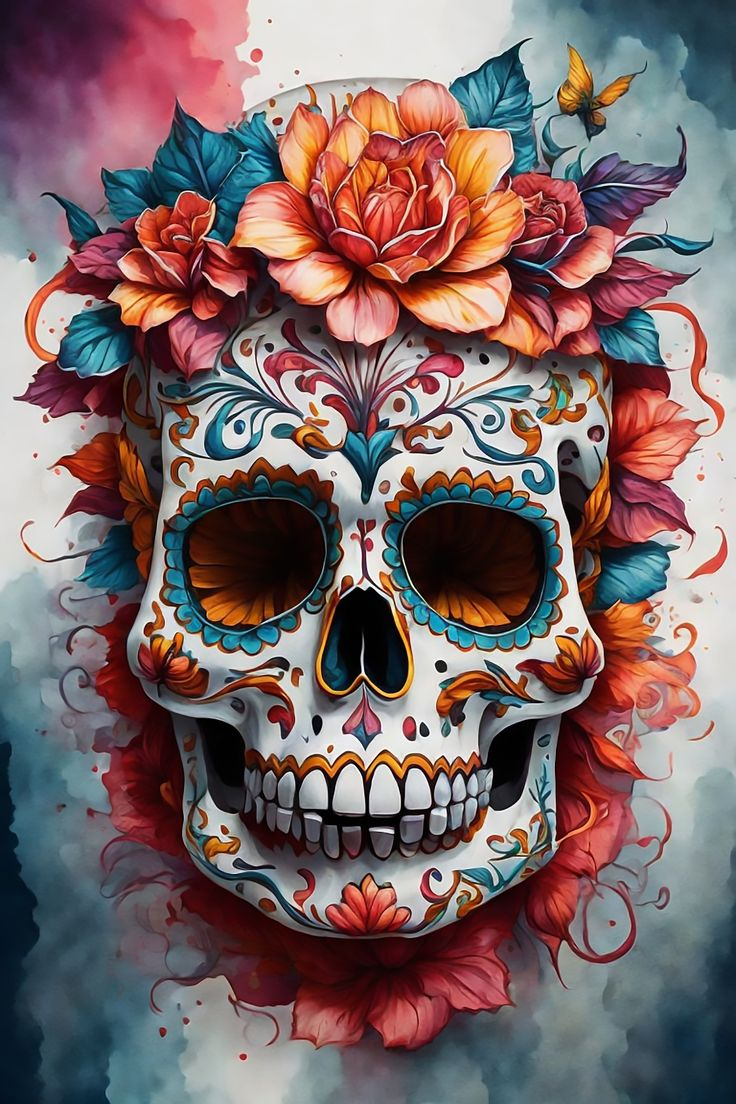Skull art is an artistic expression that involves visual representations of skulls in different forms and styles. Skulls have been used as a symbol in history, associated with themes of mortality, life, death, and rebirth. Artists from various cultures and periods have used skulls in their works as powerful and versatile symbols. In Mexico, skulls are a main element in celebrating the Day of the Dead. They decorate skulls with sugar, known as "Calaveras," created to remember deceased loved ones. Skulls are a famous motif in tattoo art, they symbolize mortality, rebellion, or the transient nature of life. Tattoo artists use skulls in larger designs or create standalone art pieces. It is used in street art and graffiti, it is found in urban art, and created with striking colors and bold lines. Street artists use it to convey thoughts of rebellion, protest, or explore themes of life and death.
These paintings included symbol elements like flowers, hourglasses, and candles. contemporary artists explore skulls as abstract or surreal. They distort the traditional skull shape and use it as a canvas for creativity. With the advent of digital technology, artists create skull art by using different digital tools. This gives a vast range of styles, from realistic digital paintings to abstract and futuristic interpretations. Skulls have various cultural meanings. The interpretation of this art can change on base of cultural, personal, and artistic contexts. It is used to convey philosophical messages or appreciated for its aesthetic appeal, it is a versatile and enduring theme in the art world.
Animal Skull Art
Animal skull art shows the creativity and practice of using animal skulls as a canvas for artwork. To create visually unique art pieces artists use paint, carve, decorate, or otherwise modify the skulls. This type of art has been presented in different cultures throughout history, it is associated with symbols, spirituality, and the natural world. The artists make it and get inspiration from various sources, such as tribal traditions, mythology, or personal interpretations of the connection between life and death. The resulting art changed widely in style, ranging from realistic depictions to abstract and contemporary designs. It is created using different kinds of techniques and mediums, like painting with acrylics, embellishing with beads, or incorporating mixed media elements. Some artists preserve the natural features of the skull, but some artists transform it completely and make an imaginative form. animal skulls in art raise ethical considerations.
Painting
Artists use acrylics, oils, or other paints to create intricate designs, patterns, or realistic appearance of the skull. Thar involves everything from lifelike portraits to abstract and symbolic pictures.
Carving
The bone of the skull allows for detailed and three-dimensional designs by carving. Artists design intricate patterns or sculptures and transform the surface of the skull into textured and visually interesting pieces.
Decorating
Artists embellish animal skulls with additional materials like beads, feathers, gems, or metals. To add a tactile element to the art and enhance the symbolic or aesthetic qualities.
Symbolism
Animal skull art shows a symbolic meaning, drawing on cultural, spiritual, or personal significance. animals hold specific symbolism in various cultures, contributing to the artwork's overall thought.
Mixed Media
Artists use different techniques and mediums to give a diverse and dynamic art piece. This involves elements such as fabric, leather, or found objects in the overall composition.

Skul Art Black and White
Black and white skull art refers to using a monochromatic color scheme, varying with shades of black, gray, and white. This approach can give striking and visually appealing art pieces. Artists use different techniques, such as drawing, painting, or digital art, to form black-and-white. Artists use pens, pencils, or charcoal to give intricate and detailed black-and-white drawings of this art. This style emphasizes the contours, textures, and details of the skull in this art, it results in a realistic or stylized appearance. Artists use ink washes or watercolors in black and gray color tones to produce a beautiful and expressive effect. This technique gives a range of shades and gradients, it adds depth and dimension to the artwork. Many artists use it digitally, the use graphic design software or drawing tablets. This medium gives flexibility in terms of style and helps in both detailed and abstract composition.
Black and white is often used with contrast and negative space. Artists use stark black lines in opposition to a white background or help them explore the interplay between light and shadow to give a visually compelling representation. It creates symbolic or surreal elements, it explores themes of life, death, and transformation. Surrealistic interpretation includes distorted or abstract compositions, challenging traditional perspectives. By combining various materials and techniques artists create mixed media black and white skull art. This includes incorporating collage elements, like newspaper clippings or textured papers, which add layers and complexity to the composition of this art. Realistic or abstract, black-and-white art evokes a sense of mystery, symbolism, and aesthetic intensity. It's a versatile form of art expression that helps artists to explore various styles while focusing on the monochromatic color scheme for a powerful visual impact.
Skull Art Sculptures
Skull art sculptures help in artistic creations that use skulls as a central theme or element in sculpture. Artists often use skulls in their work to explore themes like mortality, the cycle of life and death, and the human condition. Skulls are used symbolically in different cultures and art movements in history, representing life and death to rebirth and transformation. It's sculptures have different forms and styles, ranging from realistic appearance to abstract and symbolic. Artists use a variety of materials like metal, wood, stone, or unconventional materials such as recycled objects to create their skull sculptures. It has gained popularity in contemporary art, and artists draw inspiration from various sources, including traditional art, mythology, and popular culture.
It is used to make a statement about the impermanence of life or to explore philosophical and existential themes. It's sculptures give a unique and thought-provoking way for artists to show their creativity and engage viewers in contemplation about life and mortality. Skull art sculptures give a diverse range of artistic creations that have the prominent feature of skulls as a central theme. various materials and styles are used to convey their interpretations of life, death, and the human experience through these skull-centric sculptures. Some key points and characteristics of skull art sculptures are below:
Symbolism
Skulls are symbolic across cultures and throughout history, it represents mortality, the passage of time, and the transient nature of life. Artists use this symbol to explore philosophical and existential themes.
Materials
Sculptures of this art are created from various materials, involving but not limited to:
Metal: Using metals like bronze or steel to create durable and visually striking skull art sculptures.
Wood: Wooden skull art sculptures give warmth and texture, it provide a natural and organic feel to the composition.
Stone: Sculptors carved skulls from different types of stone, helping with intricate details and a sense of permanence.
Mixed Media: Artists use unconventional materials or a combination of materials to make unique and avant-garde skull art sculptures.
Styles
It can take on different artistic styles, ranging from realistic and anatomically accurate representations to abstract and stylized interpretations. The style chosen by the artist often reflects their aesthetic and the message they aim to convey.
Cultural Influences
Artists may draw inspiration from cultural, historical, or mythological references when creating this art. This can lead to diverse interpretations and representations based on the artist's background and influences.
Contemporary Trends
In recent years, skull art sculptures have become popular in contemporary art, with artists exploring new techniques, materials, and conceptual ideas. Some may incorporate technology or digital elements into their work, pushing the boundaries of traditional sculpture.
Themes
It can explore various themes beyond mortality, such as rebirth, transformation, and the interconnectedness of life and death. Artists infuse their artwork with personal meaning and reflections on the human condition.
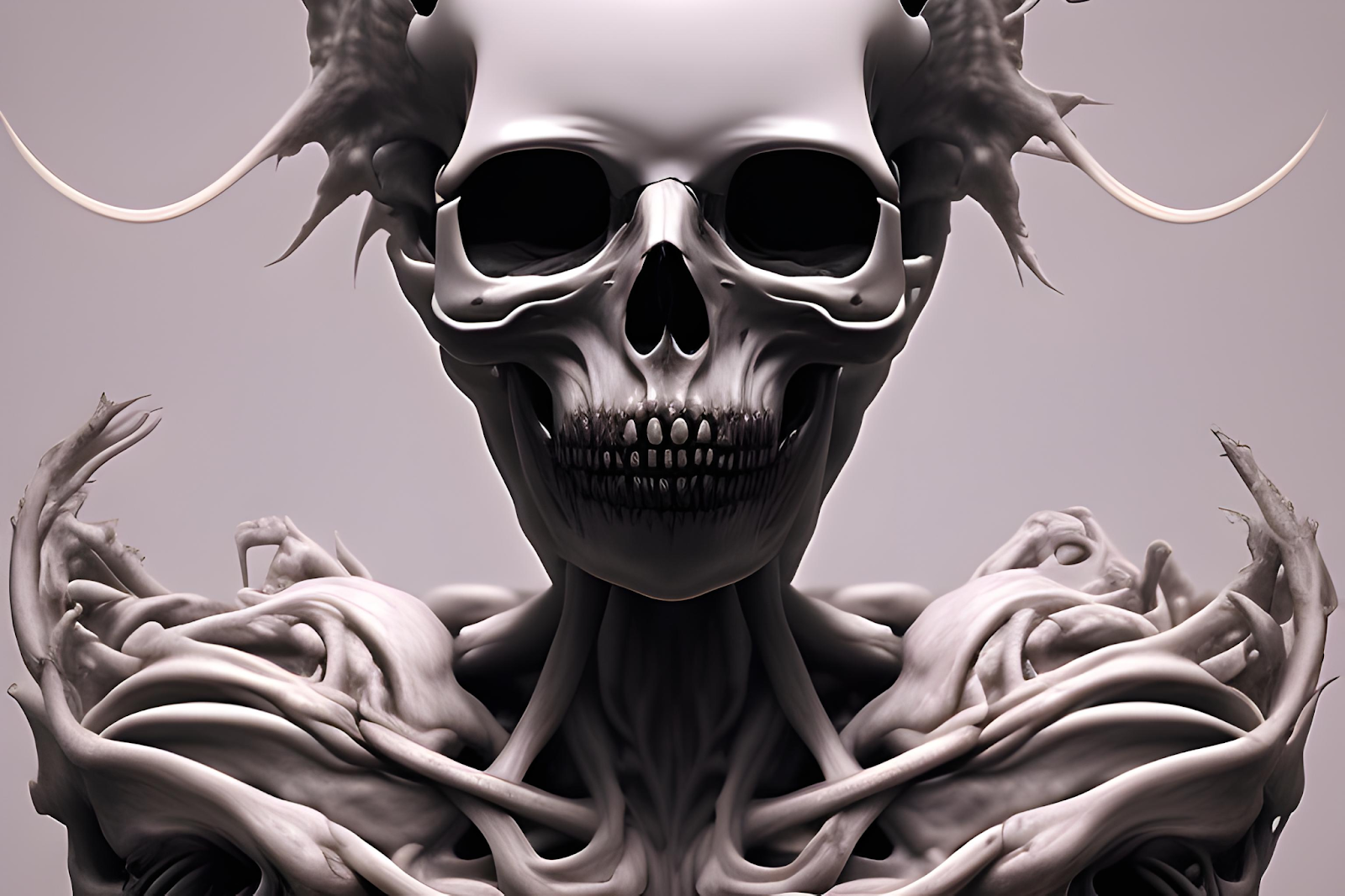
Skull Pixel Art
Skull pixel art refers to images of skulls using pixel-based graphics. Pixel art is a kind of digital art that uses small, square-shaped pixels to create an image. Pixel art is famous for early video games and computer graphics. Creating a skull pixel art piece includes carefully placing and arranging single pixels to create the desired skull image. graphic design or pixel art software are used in this. There are a variety of tools available, ranging from pixel art software such as Aseprite to more general graphic design software like Photoshop or GIMP. Selection of the size of pixel art canvas is important. Traditional pixel art is used to create small sizes, such as 16x16 or 32x32 pixels. outlining the basic shape of the skull by using a single color to create a simple silhouette.
Details are added to define the skull's features, like the eye sockets, nose, and jaw. different colors are used to create shading and highlights. Pixel art relies on strategic placement of pixels to create the illusion of depth. shading and highlights are added to give your skull dimension. This includes using darker and lighter tones to convey shadows and illuminated areas and zooming pixel art to refine the details. Adjustment of each pixel to achieve the desired look. Pixel art includes careful editing to create a polished and cohesive picture. different color palettes are used to find the best vision. color choices can dramatically impact the mood and style of pixel art. Adding a background to pixel art complements the skull. Creating skull pixel art shows a creative and nostalgic exploration of the pixel art style and conveys the powerful and symbolic picture associated with skulls.
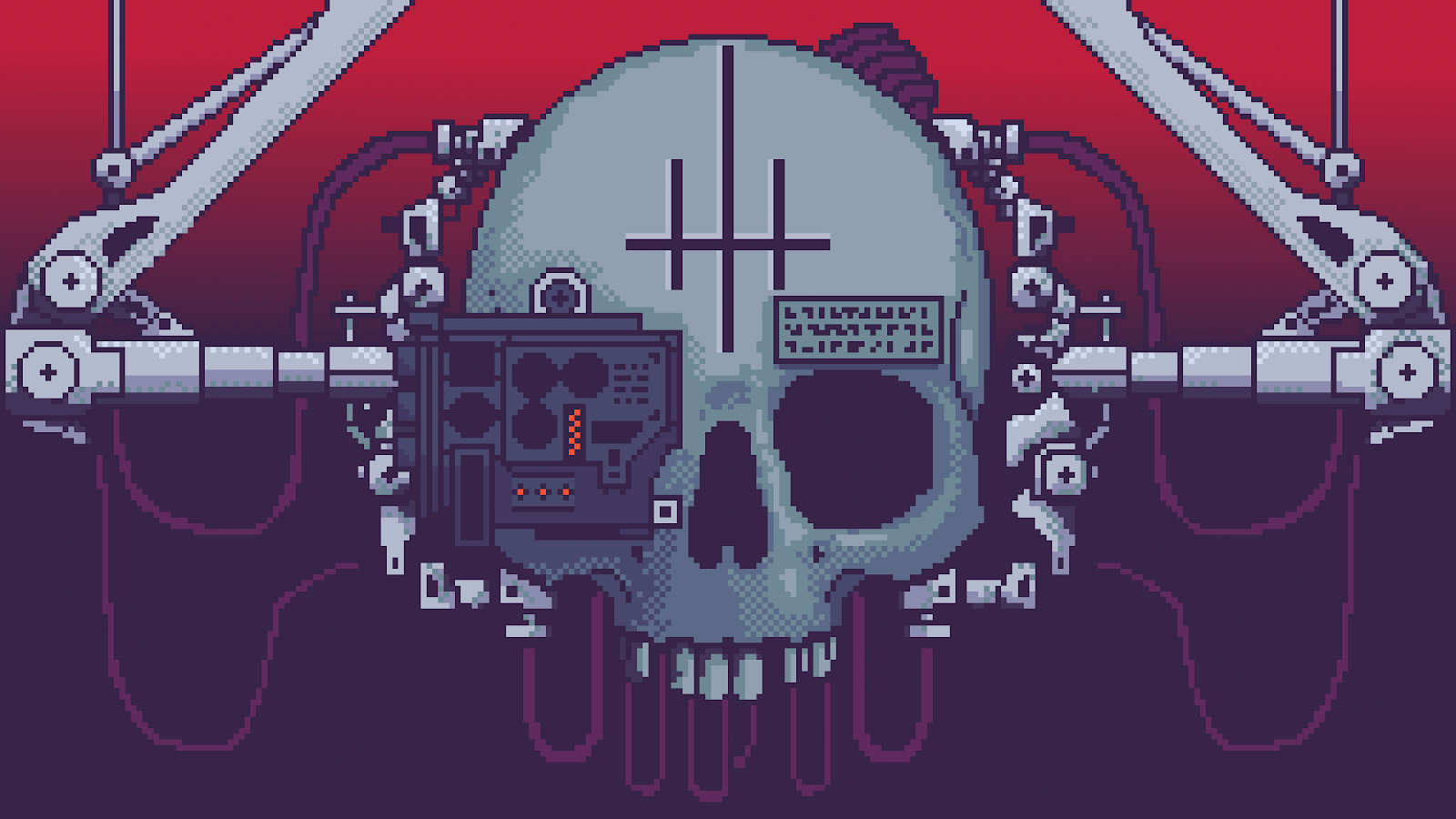
Mexican Skull Art
Mexican skull art refers to the artistic tradition of creating colorful and ornate skulls, that are associated with the Mexican holiday Day of the Dead. The tradition includes the creation of different art forms, such as sugar skulls, paintings, sculptures, and other decorative items showing skull motifs.
Key features of this art.
Symbolism
Skulls in Mexico are meant to be morbid or frightening but they symbolize it by the celebration of life and the remembrance of deceased loved ones.
Colourful Designs
It has a vibrant and colorful design. It has Intricate patterns, flowers, and decorative elements which are used in the skull imagery. Bright hues like red, yellow, blue, and purple are used to evoke a festive and lively atmosphere.
Sugar Skulls
They are a traditional part of the celebration day. The edible skulls are made from sugar, royal icing, and other confectionery materials. They are decorated with icing, colored foil, and other embellishments. sugar skulls are associated with the holiday, the artistic style has extended to different art forms.
Artistic Mediums
Mexican skull art is shown through different mediums, such as paintings, sculptures, drawings, and tattoos. Artists use a range of materials like ceramics, wood, metal, or paper mache to create their skull-themed artworks.
Personalization
Artists personalize their art to reflect the unique personalities and interests of the individuals being honored. This involves incorporating hobbies, symbols, or other elements that represent the deceased person.
Mexican skull art is deeply rooted in cultural and spiritual traditions, it gives a visually striking and symbolic way to celebrate life, remember the departed, and embrace the interconnectedness of the living and the dead during celebration day.
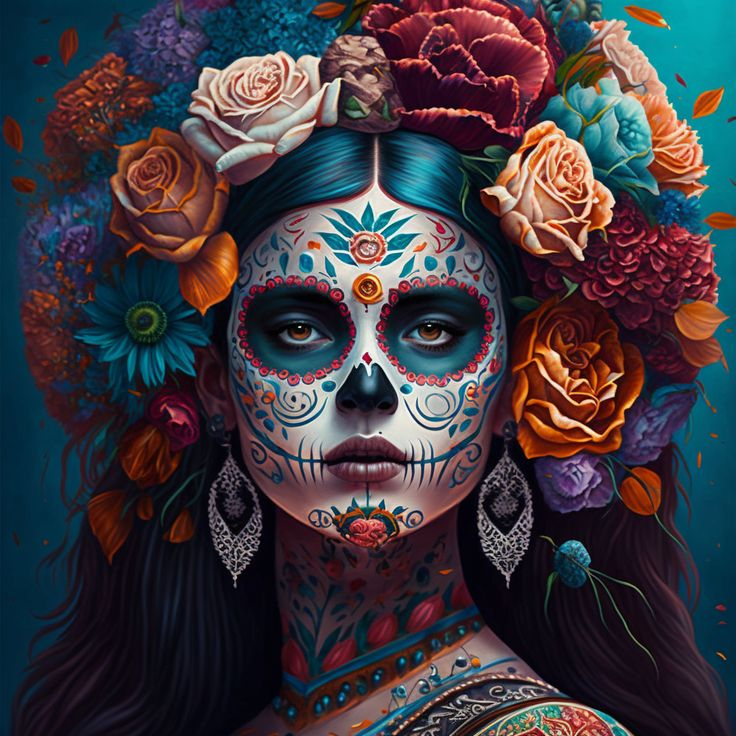
Skull Line Art
Skull line art shows drawings or illustrations of skulls created using simple lines, with a focus on outlining the structure and features of the skull. Line art is a style that uses lines to convey shapes, contours, and details without shading or coloring. artists use clean, unbroken lines in skull line art to create a stylized representation of a skull.
skull line art has key features including:
Simplicity
Line art simplifies the type of the skull, and reduces its essential elements. This simplicity refers to a clear and straightforward appearance of the skull's structure without unnecessary details.
Emphasis on Contours
The use of lines in skull line art emphasizes the contours and shapes of the skull. Artists use varying line weights and styles to highlight different parts of the skull, such as the eye sockets, nose, and jawline.
Clean and Bold Lines
A visually striking and easily recognizable representation of the skull is created by using bold and well-defined lines.
Stylization
Artists may incorporate stylized elements into their line art, adding a personal or artistic touch to the skull's representation. This can include variations in line thickness, the addition of patterns, or the integration of other design elements.
Versatility
Skull line art can be versatile and easily adapted to different artistic contexts. It is used in different mediums, like digital illustrations, tattoos, and prints.
Tattoo Art
Skull line art is particularly popular in the world of tattoo art. The clean and bold lines make it well-suited for creating timeless and visually impactful skull tattoos. Artists may customize the line art to suit the preferences of the person getting the tattoo.
Symbolic Meanings
Depending on the context and the artist's intent, skull line art can convey various symbolic meanings, including mortality, the cycle of life and death, rebellion, or simply aesthetic appreciation for the human skull's form
Cow Skull Art
Cow skull art shows artistic creations that use cow skulls as a canvas or sculptural element. This kind of art is associated with various cultural traditions, involving Native American, Western, and Mexican art. Cow skulls are a unique and symbolic surface for an artist to express their creativity, incorporating a range of techniques and styles. Artists paint intricate designs, patterns, and symbols on cow skulls. Cow skulls are carved or etched to gain detailed and textured surfaces. Cow skulls carry cultural significance in various traditions. In Western and Southwestern art, cow skulls are often depicted as part of the iconic desert landscape or as symbols of the American frontier. It is influenced by Mexican Day of the Dead traditions. Cow skulls can be integrated into larger mixed-media artworks or sculptures. Cow skull art reflects the artist's style, cultural background, and creativity.
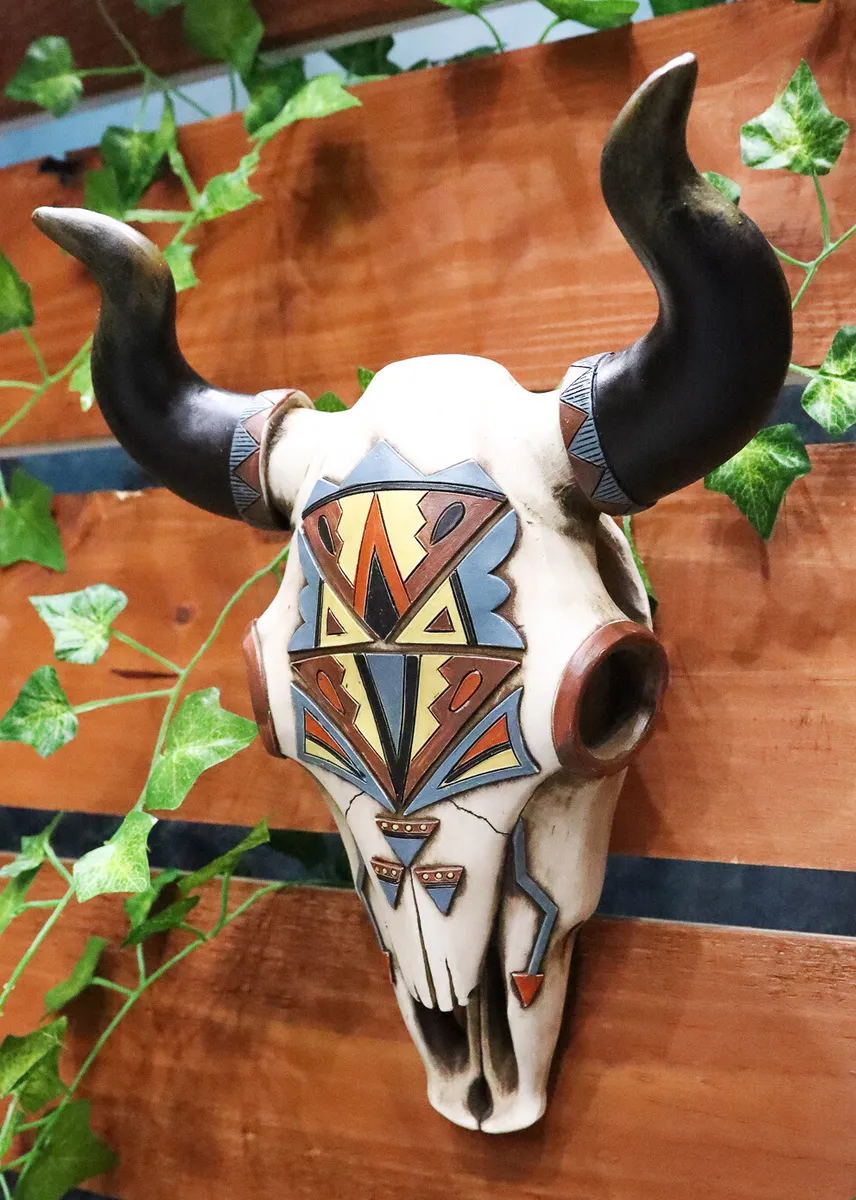
Skull Vector Art
Skull vector art is a digital illustration or graphics of skulls created by using vector graphics software. Vector art is based on mathematical equations, using scalability without loss of quality. the images are resized indefinitely without becoming pixelated or losing sharpness. Skull vector art has various forms, styles, and themes depending on the artist's intent. Artists use tools for the flexibility of shapes, lines, and colors to help in creating intricate and professional-looking vector illustrations.
Stylized Skulls
Artists stylize skulls, simplifying or exaggerating some features to create a unique and visually interesting appearance. By using bold lines, intricate patterns, or incorporating other design elements.
Decorative Elements
Vector artists add decorative elements to the skull, like intricate patterns, swirls, or other details to enhance the visual appeal and add a personal touch to the artwork.
Thematic Variations
Skull vector art is created in different thematic variations, ranging from realistic depictions to abstract or fantasy designs.
Colorful Designs
Some skull vector art is monochromatic or has a limited color palette, some feature vibrant and bold colors to convey different moods or enhance specific themes associated with the artwork.
Tattoo Designs
Skull vector art is used as a basis for tattoo designs. Tattoo artists create vectorized skull images to give clean lines and scalability.
Logo and Graphic Design
Skull vector art is used in graphic design for creating logos, album covers, or promotional materials.
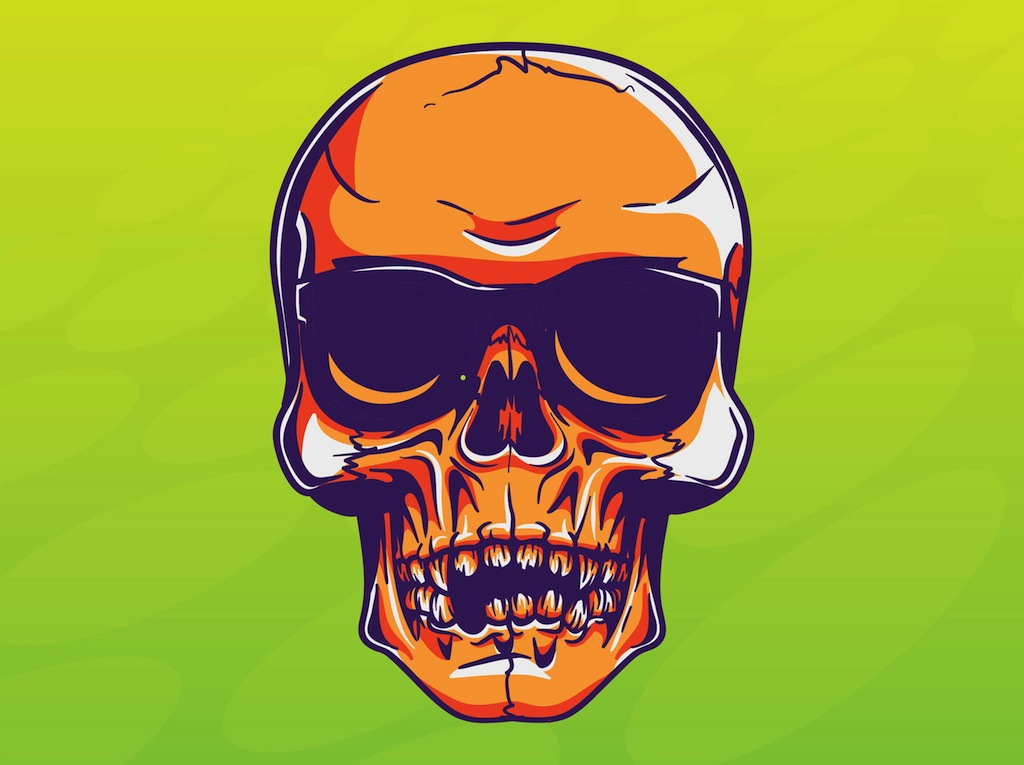
Colorful Skull Art
Colorful skull art shows a vibrant and diverse color palette. Using bold and bright colors to create visually energetic compositions. It is found in various artistic forms, like paintings, digital illustrations, sculptures, and tattoos. The artist uses a diverse color palette. The choice of colors in this art gives symbolic meaning. It is inspired by cultural traditions. Artists use it as a form of personal expression. The choice of colors refers to the artist's emotions, perspectives, or thematic intentions. Colorful skull art is versatile and adapted to different artistic mediums and styles.
